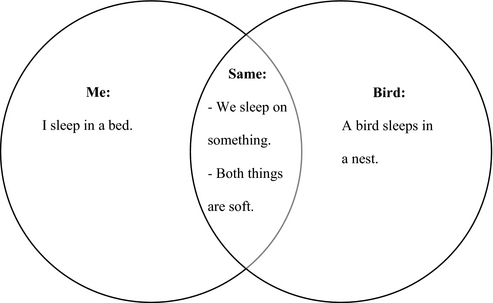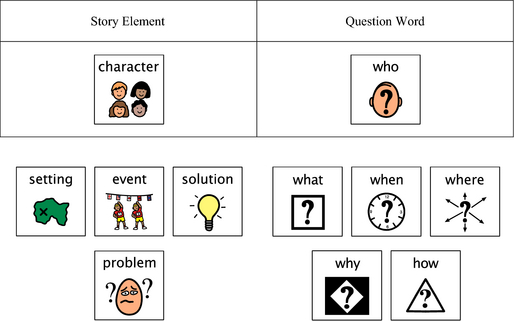Introduction
Reading comprehension is a critical building block for effective early literacy development. Many students with autism spectrum disorder demonstrate difficulties in reading comprehension. These difficulties may be attributed to deficits in Theory of Mind, Weak Central Coherence, and Executive Functioning. Given the rise in the number of students with this disability participating in the general education setting, practitioners need to acquire the background knowledge on how to effectively teach this population.
The purpose of this article is to introduce practitioners to a step-by-step guide for teaching reading comprehension, the characteristics of autism spectrum disorder that may impede students from acquiring reading comprehension, and evidenced-based practices that can be used to improve their comprehension abilities.
Teaching children with autism to comprehend text can be challenging. What are some strategies or steps educators can incorporate into daily lessons to meet the literacy needs of these students?
We know that literacy skills taught during the primary grades to students with special needs (Coyne, Kame’enui, & Simmons, 2004; Foorman, 2007) or without (Lonigan, 2006; Oakhill & Cain, 2007) are critical building blocks for subsequent literacy development. Students ages 6–11 identified with a disability and receiving special education services are spending more time in general education classrooms in response to the least restrictive environment (LRE) mandate of the Individuals With Disabilities Education Improvement Act (IDEIA; Individuals With Disabilities Education Improvement Act, 2004). In particular, students identified with an autism spectrum disorder (ASD) have increased the amount of time they spent in general education classrooms from 37.93% to 41.30% (Office of Special Education Programs, 2007, 2012).
The No Child Left Behind Act (2002) suggests that teachers are to provide scientifically based reading instruction for all students, including those with disabilities such as ASD. With the increasing numbers of students with ASD being provided instruction in the general education setting, teachers are most likely asking themselves, “How do I provide effective reading instruction to students with ASD?” One critical building block of literacy instruction that is difficult to acquire for students with ASD is the ability to comprehend text (Chiang & Lin, 2007; Nation, Clarke, Wright, & Williams, 2006; O’Conner & Klein, 2004; Whalon & Hart, 2011a, 2011b). Based on the social, communicative, and behavioral characteristics of students with ASD (American Psychiatric Association, 2013), these students may even struggle to achieve the expectation of comprehending text at a basic level. Some students with ASD demonstrate the ability to decode text above their current IQ and, many times, outperform their neurotypical peers (Newman et al., 2007). Around age 8, however, many children with ASD begin to be outperformed by their peers in terms of comprehension abilities. Therefore, there seems to be a pressing need for general education teachers to provide basic instruction on reading comprehension to help students with ASD.
Of the several cognitive factors that contribute to the comprehension deficits for students with ASD (e.g., language processing, communicative output, repetitive behavior), three have been identified to describe the variations in comprehension abilities of students with ASD (Williamson, Carnahan, & Jacobs, 2012).
Theory of mind (ToM) refers to the ability to understand others’ point of view or perspective (Frith, 2012; Peterson, 2014; San José Cáceres, Keren, Booth, & Happé, 2014). Students in first grade, for example, are expected to be able to understand the characters’ feelings in a text and relate those feelings to their own. Without ToM, students with ASD struggle with understanding the idea that people have thoughts other than their own, understanding situations from others’ perspective, and predicting behavior based upon context (Gately, 2008).
Central coherence is the ability to bring details together into a whole concept or idea. From the details of various types of text, first graders are taught to be able to identify the major theme of these texts or genres (e.g., fiction, nonfiction). Students with ASD may demonstrate weak central coherence (WCC), or the inability to bring details into a central concept or context (Booth & Happé, 2011; Frith, 2012; Williamson, Carnahan, & Jacobs, 2012).
Executive functioning (EF) refers to the process of organizing, planning, and monitoring progress when presented with a situation (Carnahan, Williamson, & Christman, 2011; Ozonoff, Pennington, & Rogers, 1991). First graders are typically expected to describe various aspects of a story using details such as characters and settings. EF deficits in students with ASD might influence their ability to engage in organizing (i.e., sequencing the events of a story), planning (i.e., accessing prior knowledge, making connections), and monitoring their comprehension (i.e., creating mental images, engaging in discussions, summarizing).
These cognitive theories may help us understand why students with ASD struggle with reading comprehension as they pass age 8, and they can guide the type of interventions we deliver. Reading comprehension is a covert activity (i.e., the process of understanding reading texts occurs inside students’ minds). Therefore, it is paramount for teachers to intentionally use strategies to determine and be able to observe, overtly, the level of understanding students have on the topic (Roberts, 2013). The steps presented in the following paragraphs provide ways in which general educators can overtly observe the students’ comprehension of the text. These steps will also demonstrate how general educators can teach students with ASD to comprehend daily reading texts at a basic level.
Steps for teaching reading comprehension
While we understand that contemporary primary classrooms discourage front-loading (e.g., picture walks) within current reading instruction, if a child with ASD is not accessing the curriculum, it may be necessary for the general education teacher to accommodate the learner by embedding front-loading steps without disrupting the curriculum for the other learners (Vinton, 2012). As former first-grade, primary general education, and special education teachers, we found the following evidence-based steps effective in helping students with ASD improve their ability to comprehend reading texts. Table 1 provides an overview of all strategies or steps with examples.
Table 1. Steps for Teaching Reading Comprehension for Students With Autism
| Step | Description | Example |
|---|---|---|
| 1. Access and Build Background Knowledge | Before Reading: Visual Support Presenting the student with information related to the text (Williamson & Carnahan, 2010) | “Look at this card. Today, we will read about animals.” |
| Before Reading: Preteaching Vocabulary Teaching key terms to mastery using PTM (Koppenhaver, 2010) | “Draw a line from the picture to the word” or “Point to _____.” (PTM; Fossett & Mirenda, 2006) | |
| 2. Create Mental Images | Before Reading: Picture Walk Previewing a story using pictures (Zimmerman & Hutchins, 2003) | “Look at this picture. What do we see?” or “Can you describe what the picture looks like?” |
| 3. Make Connections | During Reading: Graphic Organizer A visual representation of the story (e.g., events, sequence, characters; Stringfield, Luscre, & Gast, 2011) | “Now that we have filled in our graphic organizer, what (TS, TT, or TW) connection can we make?” |
| 4. Engage in Consistent Discussions | After Reading: Reciprocal Questioning Modeling for students how to generate and answer questions (Whalon & Hanline, 2008) | “We just read about a problem. Why is a good question word to find out about the problem. Why is the character on fire?” |
| 5. Summarize Understanding | After Reading: Story Recall Teaching students to create causal connections and causal chains (Diehl, Bennetto, & Young, 2006) | “What is the main idea of the story that we just read?” or “What is the story about?” |
Note: Adapted from First grade teachers’ perceptions of the five strands of effective reading instruction and their possible influence on daily instructional practices by Nguyen (2013, p. 203). Copyright 2013 by Neal Nghia Nguyen.
Step 1: Access and Build Background Knowledge
From a WCC perspective, students with ASD may have difficulty accessing and building background knowledge. Of the effective evidence-based strategies reported within the literature, none identify ways for students with ASD to make meaning from the text without accessing or building upon background knowledge. Two strategies that can be used to access and build upon background knowledge for students with ASD are priming with visual supports (Hume, 2013) and preteaching vocabulary (Gately, 2008; Koppenhaver, 2010). For instance, before reading an informational text about birds in a first-grade classroom, we would prime the students with ASD by first placing two pictures from the text on separate index cards. Next, we would present each picture card to the student and say, “Look at this picture. This is a nest. Look at this picture. This is an egg” (Williamson & Carnahan, 2010). Next, we would preteach the key vocabulary from the text (Koppenhaver, 2010) using picture-to-text matching (PTM; Fossett & Mirenda, 2006). With this strategy, we would write or print the words of the pictures previously shown to the student on two index cards. Next, we would place one matching picture and word card in front of the student and say, while pointing to the picture of the nest, “Look at this picture. This is a nest.” Then, while pointing to the word card, we would say, “Look at this word. This says nest. Say it with me.” By accessing and building upon students’ background knowledge, we will be helping them overcome their existing WCC deficits by enabling them to identify details from the text through pictures and words.
Step 2: Create Mental Images
Students with ASD may also have difficulty creating mental images due to WCC and ToM. Visual supports, such as creating mental images, are crucial for assisting students with ASD to understand both literal and nonliteral constructs (Styslinger, 2012). Continuing our example of a first-grade class from Step 1, we would then engage in a picture walk of the book (Zimmerman & Hutchins, 2003). During the picture walk, as we come to those pictures identified in Step 1, we would ask the student with ASD, “Look. What is this?” This process of recalling background knowledge through a picture walk will assist the students with ASD to create a mental picture that was previously learned. With regard to the effectiveness of this picture walk approach for students with ASD, Gately (2008) suggests, “Focusing students with ASD on pictures satisfies their tendency to learn visually and is more effective than simply talking or reading a summary of the book jacket” (p. 42). In other words, students with ASD engage with and make meaning from the text through visual supports.
Step 3: Make Connections
During the third step, first-grade students with ASD might find it difficult to make text-to-self and text-to-text connections due to their EF deficits (May, Rinehart, Wilding, & Cornish, 2013) and text-to-world connections due to WCC (Happé & Frith, 2006). One evidence-based strategy to improve the ability of students with ASD to make connections with the text is to create graphic organizers (Stringfield, Luscre, & Gast, 2011). If our students with ASD lacked background knowledge on nests and eggs and were not able to create mental images before reading, we would help them make these text-to-self connections using a Venn diagram (see Figure 1). We first would present the graphic organizer to the student and, while pointing to the “Me” section, say, “Look at this. You sleep on a bed.” Next, while pointing to the “Bird” section, we would say, “Look at this. The bird sleeps on a nest.” Then, while pointing to the center of the Venn diagram, we would say, “Look at this. You both sleep on something!” In addition, this process of making connections can be generalized to listening to an audio book in a listening center or viewing a video on any topic being taught. Further, graphic organizers were demonstrated in recent studies as an effective method for increasing comprehension across academic content areas because they help these students to make connections (Knight, Spooner, & Browder, 2013; Schenning, Knight, & Spooner, 2013; Zakas, Browder, Ahlgrim-Delzell, & Heafner, 2013).
Figure 1. Venn Diagram for Linking Text to Self When Reading Informative Text on Birds

Step 4: Engage in Consistent Discussions
EF deficits may affect the ability of students with ASD to engage in consistent discussions with teachers or peers. To date, reciprocal questioning (e.g., the teacher and his or her students take turns to ask one another various questions about a text) might not be often used to teach typical developing first-grade or primary students. However, an adapted guided reciprocal questioning approach has been identified as one effective strategy to engage at-risk readers and students with ASD in discussions (Helfeldt & Henk, 1990; King, 1995; Whalon & Hanline, 2008). During a close reading of the informational text on birds mentioned previously, we would model to the student how to ask and respond to questions about the text (see Figure 2). For example, we would place the Character picture under the Story Element column and the What picture under the Question Word column. Next, we would pose a question while pointing to the pictures on the storyboard, such as, “What does the bird sleep on? A nest.” Then, we would ask the student the same question and wait for a response. Lastly, the student would have the opportunity to ask the teacher the same question that was previously modeled. By using this reciprocal questioning strategy during the first close reading of an informational text, students will, over time, be able to generate and answer questions while reading text. As stated by Harvey and Goudvis (2013), reading comprehension is the process of acquiring and using knowledge. Teachers are to “design instruction that teaches students to become critical, curious, strategic readers” (p. 434). The reciprocal questioning strategy will help students with ASD in first grade begin the process of moving from acquiring the knowledge to using the knowledge. Numerous review findings from the National Reading Panel (2000, 2012) indicate that consistent class discussion, in the form of questions from primary classroom teachers, were a key factor in guiding young readers to make sense of what they read.
Figure 2. Reciprocal Questioning Using a Story Board

Step 5: Summarize Understanding
Finally, students with ASD might encounter difficulties during this fifth step of summarizing the reading texts due to WCC (Williamson et al., 2012). No literature has been published on how to teach students with ASD to summarize reading texts at a comprehension level higher than recalling facts of the story. Story recall (Diehl, Bennetto, & Young, 2006) involves assisting students with ASD to create causal connections (identifying the causal relationships among events in a story) and causal chains (identifying the “gist” of the story). Causal connections were made while we helped these first-grade students with ASD build background knowledge (see Step 1), conduct picture walks before reading (see Step 2), and use graphic organizers during reading (see Step 3). Causal chains were made during Step 4 while we engaged in reciprocal questioning. Once these connections and chains are made, we would ask the student to verbally retell what the story was about by saying, “What is the main idea of the story we just read?” While this strategy is useful in assisting students with ASD to recall discrete events, it may not elicit a coherent retelling of the story. Despite this limitation, story recall is one evidence-based strategy that can assist students with ASD to demonstrate an understanding of what they have read.
Conclusion
Federal and state laws mandate that all students are entitled to receive adequate daily academic reading instruction (Individuals With Disabilities Education Improvement Act of 2004; No Child Left Behind Act of 2001). Given the complex nature and characteristics of ASD, it is helpful for teachers struggling with teaching students to comprehend reading texts by using the ready-to-use evidence-based strategies or steps we have described. A first-grade or primary classroom teacher must be aware of the unique cognitive style of students with ASD and effective interventions for this population that can be embedded into quality reading instruction. By providing easy-to-use steps in reading comprehension instruction for teachers to implement on a routine basis, we can give primary students with ASD the opportunity to acquire reading comprehension skills at their highest potential.
Biographies
Neal Nghia Nguyen is an assistant professor of early childhood/special education, early literacy in the Department of Elementary, Early and Special Education at Southeast Missouri State University, Cape Girardeau, Missouri, USA; e-mail [email protected].
Patrick Leytham is an assistant professor of special education in the Department of Teacher Education at Weber State University, Ogden, Utah, USA; e-mail [email protected].
Peggy Schaefer Whitby is an associate professor of special education in the Department of Curriculum and Instruction at the University of Arkansas, Fayetteville, USA; e-mail [email protected].
Jeffrey I. Gelfer is a full professor of special education in the Department of Educational and Clinical Studies at the University of Nevada, Las Vegas, USA; e-mail [email protected].
Nguyen Neal Nghia, Leytham Patrick, Schaefer Whitby Peggy, Gelfer Jeffrey I. (2015). Reading Comprehension and Autism in the Primary General Education Classroom. The Reading Teacher, 69(1), 71–76. doi: 10.1002/trtr.1367
